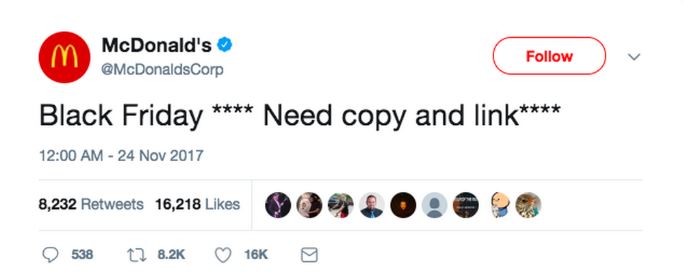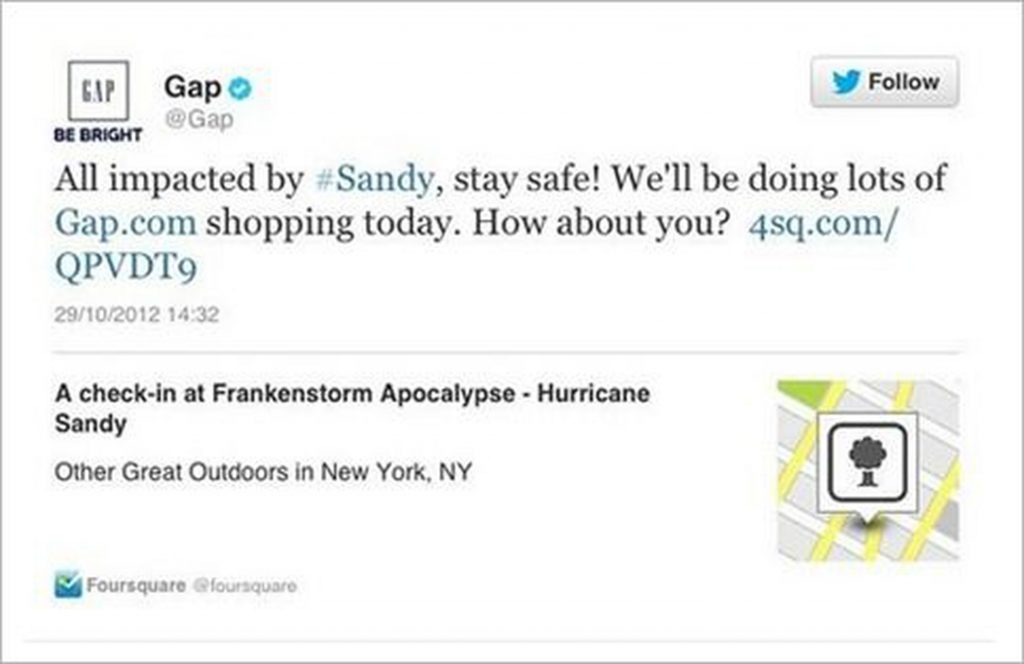Mistakes happen. On social media communication is public, typed out, and never truly erasable because of the ever-powerful screenshot. Both small, local nonprofits and global organizations have experienced cringe-worthy moments on social. You won’t be able to foresee every potential crisis or social media mistake, but you can be better prepared for the day things do go awry by learning about the mistakes made by others and how they were handled.
So, in the spirit of marketing preparedness, dim the lights, grab your Halloween candy, and get ready for a truly terrifying tale: Social Media Horror Stories.

Placeholder Text Goes Rogue
You use software like Hootsuite or Buffer to schedule your posts on social media. These tools are fantastic for organizing and scheduling your content in advance. Then one day, one of your coworkers comes to you in a frenzy with a screenshot of what was just published on your X account

Your placeholder text has gone rogue. It’s not just a reminder sitting in your scheduling software—it’s a post that all your followers can see. If you’re quick enough, the “delete” button can be your saving grace. If not, well, the post may live in infamy.
Qgiv Pro-Tip: If you use post scheduling software make sure that your posts are automatically set to “draft” instead of “publish” or “scheduled.” Train any volunteers or employees that help you with this task to make sure placeholder text is never published.
When the Social Media Trend Backfires
We’ve all been there. You see a topic trending and immediately wonder if it’s something that relates to your organization. You may even read a few tweets and determine that the subject seems like something positive that inspires engagement. It’s a win-win. Time to tweet.

Gap made that mistake in a now-infamous tweet. The hashtag #Sandy was trending in advance of a major hurricane approaching the east coast of the U.S. in 2012. Gap used the hashtag and approaching hurricane to plug online shopping. The backlash was almost instant.
Qgiv Pro-Tip: It can be easy to assume that a trending topic, no matter its nature, is good to discuss. All press is good press, right? Not in this case. If you belong to a large organization, it’s important to understand how locals may feel about a trending topic. Something like a hurricane, or any trending event for that matter, may have bad implications for those close to the event. By capitalizing on the trend your organization displays insensitivity.
The Glaring Typo
Social media’s instant nature makes it incredibly easy for typos to slip through the cracks and leak into public posts. Unlike a direct mail appeal, which may be proofed by four different people over the course of two weeks, a social media post usually receives far less attention.
You’re going through your normal routine and a volunteer sends you a screenshot of a typo in a post. Your heart races and you scramble for the nearest phone or computer so you can click “edit” or “delete.” Has the president of your nonprofit seen the typo? Board members? The thought alone puts a lump in your throat.

Qgiv Pro-Tip: Typos happen. Try and implement a proofing process for social media content. Having at least one additional set of eyes on a post before it’s published will reduce the chance that content containing a typo goes live.
You’ve Offended Everyone
How’s it possible to offend everyone? I’m glad you asked. When there’s one of you manning your social channels and the angry comments come flooding in, it’ll feel like you’ve offended everyone.
It all begins innocently enough. You have a great post idea; you even take extra time to proof your copy. Then your phone begins blowing up. How could you have known your post was offensive?

American Apparel mistook the Challenger explosion for fireworks. What was supposed to be a well-intentioned 4th of July post turned sour quickly. American Apparel blamed their social media employee for the post and said they were, “born after the tragedy…”
Qgiv Pro-Tip: As corny as it sounds, our differences are our greatest strengths. What you may not notice could be extremely obvious to someone of a different demographic. Try to build a team of diverse volunteers and staff who can help make you aware of potential backlash before it happens.
Conclusion
Mistakes happen. What we can learn from these social media fails is how to better prepare our own organizations and content. With the right preparation and proofing process your nonprofit will be on track to avoid truly horrifying social media fails!


